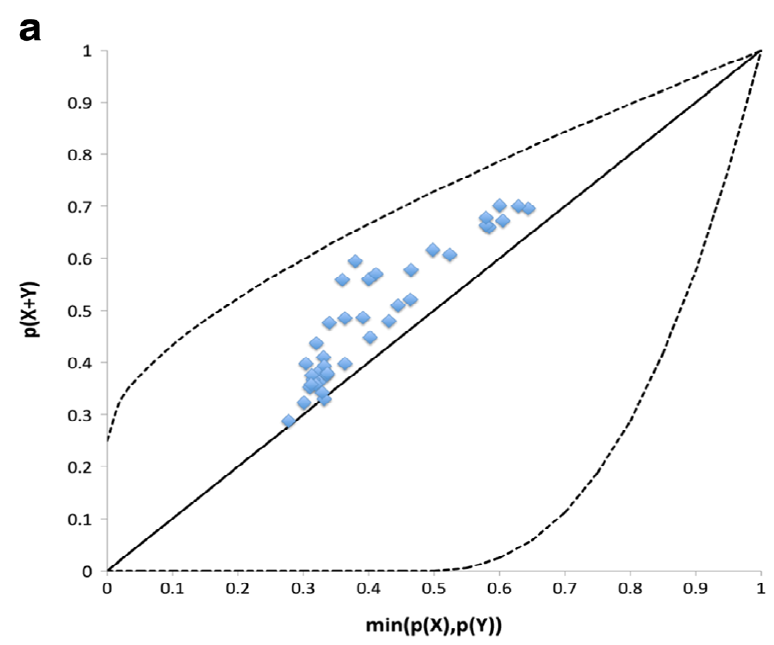YouTube is (in)famous for its cat videos. An estimate from 2015, now surely superseded by masses of additional material, located more than 2 million cat videos on YouTube that collectively have been watched 25,000,000,000 times.
Even if you are not a cat aficionado, there is at least one video that is worth watching. It explains Schrödinger’s Cat, the weird, fascinating, and nearly incomprehensible feline that is both alive and dead (or neither) inside a box until we have look (at which point it is either dead or alive).
So have a look here:
Quantum phenomena, such as the cat’s entanglement into different parallel realities, have been at the very core of modern physics for around 150 years. Yes, it does date back that far. And sure enough, quantum theories have recently also found their entry into cognitive psychology. This entry has been sufficiently exciting for The Atlantic magazine to publish an interesting introduction to quantum psychology.
So how does Schrödinger’s Cat manifest itself in human cognition and decision making? And why would quantum physics provide any insight into what people do?
The answer to the first question lies in the decades of research that have shown people’s decision making to be suffused with biases, errors, and contradictions. In the same way that Schrödinger’s Cat can be alive and dead, people—including experts—sometimes respond in opposing ways between different contexts, even if that context is irrelevant to the task at hand.
The answer to the second question is that people’s apparent violations of normative rules (such as logic or Bayesian hypothesis testing) can be described and explained within a quantum framework. After all, a computational framework that can explain how cats are simultaneously alive and dead should be powerful enough to explain similarly colorful human behaviors.
A recent article in the Psychonomic Bulletin & Review demonstrated the power of the quantum approach by tackling two of Schrödinger’s cats simultaneously. James Yearsley and Jennifer Trueblood considered two well-known cognitive fallacies: The conjunction fallacy and order effects.
The conjunction fallacy arises when people judge the conjunction of two events to be greater than at least one of the constituents—for example, if you think it’s more likely that it “will be warm and sunny” tomorrow than that it “will be sunny”, then you have committed a conjunction fallacy (this particular one is easy to avoid if you live in Britain).
Order effects arise when people assign different probabilities to a hypothesis when two pieces of evidence, X and Y, are presented in the order X,Y than in the order Y,X. For example, your anticipated future weight loss might be less (or more) if you first consider the effects of exercising before you consider the effects of your diet, than if you consider their effects in the reverse order.
Both of those phenomena can be explained within a quantum framework if the events are assumed to be incompatible. Incompatible events do not commute; that is, P(X&Y) ≠ P(Y&X).
Incompatibility implies order effects by definition, and incompatibility has also been used to explain the conjunction fallacy.
Yearsley and Trueblood reasoned that because both order effects and conjunction fallacies arise from the same basic underlying assumption of incompatibility, those effect should co-occur. To test this idea, Yearsley and Trueblood conducted an online experiment (N=1,200) that presented participants with judgments about American political candidates during the 2016 election in three different formats: a single event, such as “How likely is it that Ted Cruz will win the Texas primary “; a conditional such as “Suppose Donald Trump wins the Texas primary, how likely would he be to become the Republican Presidential candidate?”; or a conjunction, such as “How likely it is that Bernie Sanders will lose the Massachusetts primary and lose the Democratic nomination?”
Participants were asked to make a sequence of decisions with additional information being provided along the way. For example, they might be asked about the likelihood of Trump being nominated given a win in Texas, followed by a re-evaluation if he also loses in Virginia. (The primaries were chosen to be on the same day, to rule out any causal link between them.)
The figure below provides a first snapshot of the results, focusing on order effects (e.g., win Texas, then lose Virginia vs. lose Virginia followed by winning Texas).

The presence of order effects is unmistakable. In all cases, people judged the likelihood of winning the nomination to be greater if the win was revealed after the loss—a conventional recency effect. The presence of order effects establishes the consistency of the results with the basic assumption of incompatibility in the quantum probability framework.
Yearsley and Trueblood next examined the presence of conjunction fallacies—would people rate the conjunction of two events (e.g., winning a primary and the nomination) to be greater than the probability of one of the constituent events. The next figure reveals the presence of the conjunction fallacy: nearly all dots are above the diagonal and therefore violate the rule of probability that the joint occurrence of two events cannot be more likely than the probability of the less likely of the two constituent events occurring on its own.

Thus far, the results replicate well-established findings and reveal their compatibility with the quantum framework. However, the data thus far are not uniquely supportive of quantum theory.
To adduce such unique support, Yearsley and Trueblood examined the co-occurrence of the two phenomena within the same individuals, as is predicted by quantum theory. This analysis is shown in the next figure, which plots the magnitude of each person’s conjunction fallacy against the magnitude of their order effects:

The figure confirms that most participants display both effects, and they do so both for Democratic (blue points) and Republican (red) candidates.
The gray points plot the results of a simulation of the quantum model across an exhaustive search of the possible parameter space of that model. It is clear that virtually all the data points lie within the envelope of the simulated outcomes, and the density of observed points is mirrored by the density of simulated outcomes.
Taken together, the results confirm one of the key advantages of quantum models, which is that they unite phenomena that previously had often been considered to be disparate. Indeed, absent a quantum model, who would have thought that order effects are related to your propensity to think that it is more likely that it “will be warm and sunny” tomorrow than that it “will be sunny”?
Schrödinger’s Cat is therefore alive and well within all of us as we make decisions in our daily lives.
Psychonomics article highlighted in this post:
Yearsley, J. M., & Trueblood, J. S. (2018). A quantum theory account of order effects and conjunction fallacies in political judgments. Psychonomic Bulletin & Review, 25, 1517-1525. DOI: 10.1037/a0022542.

